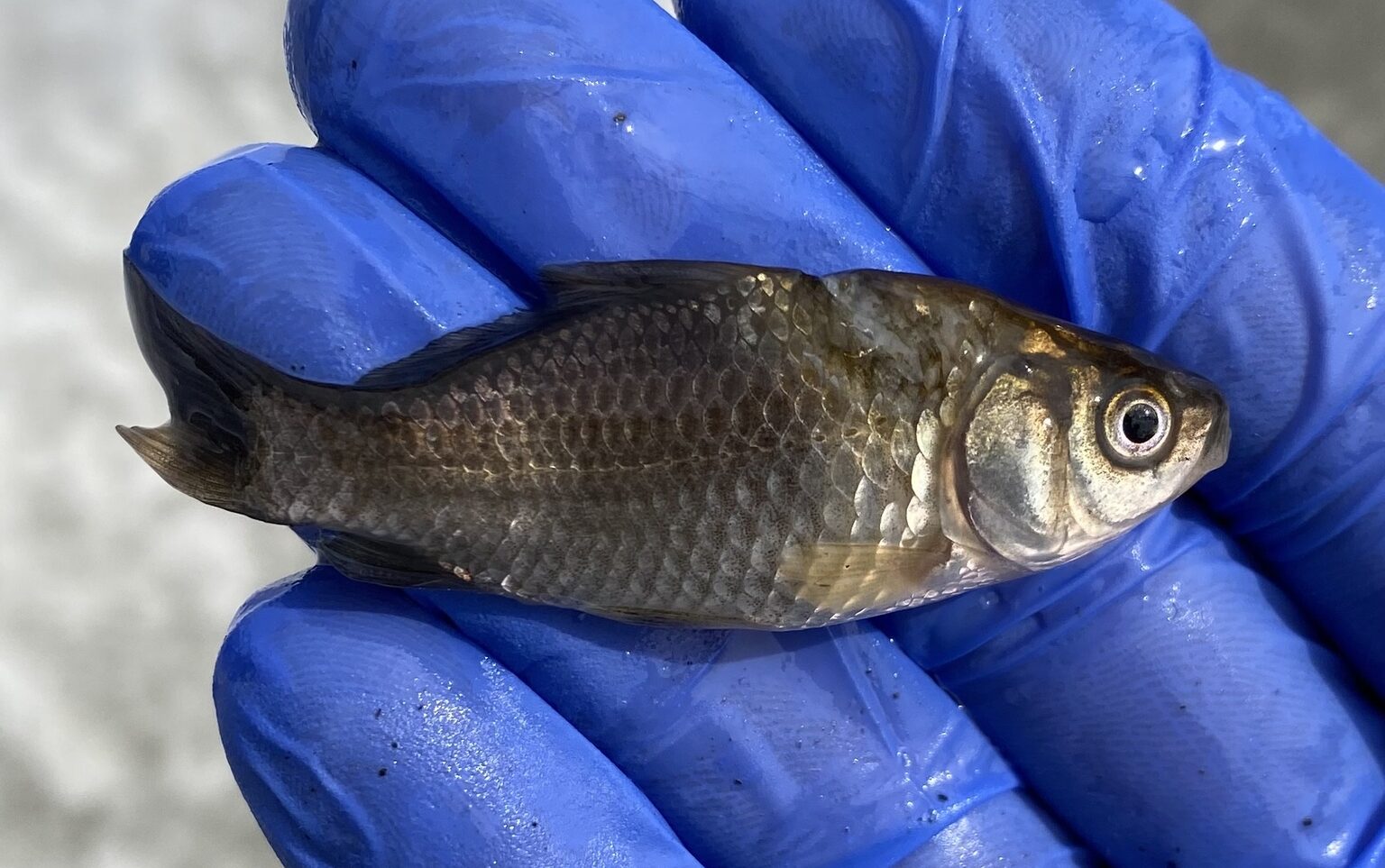Goldfish
Description
Goldfish, a seemingly harmless pet from eastern Asia, has become one of the most widespread invasive fish species in North America. Due to their popularity as a pet species and adaptability to various environmental conditions, they have established populations in numerous water bodies across Canada and the United States. Goldfish can grow significantly larger in the wild than in captivity, with their feeding habits and reproductive capabilities posing threats to native species and habitats.

Goldfish © Cameron Chevalier, some rights reserved (CC BY-NC)
Habitat
Goldfish prefer calm, vegetated waters such as ponds, streams, and lakes. They are often found in urban or suburban areas where they’ve been released by owners. They thrive in environments with low dissolved oxygen levels and can tolerate a wide range of water temperatures. Their resilience to poor water quality makes them a formidable invasive species.1
Identifying Features
Impacts
Goldfish can significantly impact local ecosystems through:
Spread and Control
Goldfish have been introduced globally, primarily through the aquarium trade and by being intentionally or unintentionally released into the wild by pet owners. Releasing a pet into the wild is not a good option – it’s illegal, dangerous to the environment and inhumane, as many goldfish do not survive due to predation and environmental conditions. The Goldfish’s ability to reproduce quickly and adapt to different conditions has helped them establish populations throughout Canada,
What You Can Do:
Reporting
If you encounter a goldfish or other invasive species in the wild, you are encouraged to report it to local authorities or through invasive species reporting programs to aid in management and control efforts.
For further information on identifying and managing goldfish invasions, and to learn more about their impacts on native ecosystems, visit the following resources:
1Boston, Christine & Larocque, Sarah & Tang, Rex & Brooks, Jill & Bowman, Jennifer & Cooke, Steven & Midwood, Jonathan. (2023). Life outside the fishbowl: Tracking an introduced population of goldfish (Carassius auratus) in an embayment on the Laurentian Great Lakes. Journal of Great Lakes Research. 50. 102253. 10.1016/j.jglr.2023.102253.